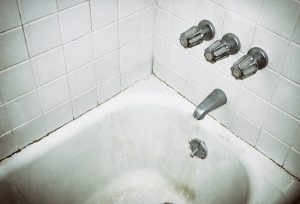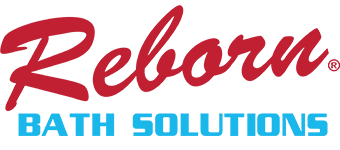The Difference Between Mold & Mildew: What They Are & How They Develop

Mold and mildew are two things you definitely don’t want growing in any of the bathrooms of your Huntington Landmark home in California. But have you ever wondered what makes mold and mildew different? Mold and mildew are both fungi that thrive in moist environments. In households, this type of environment is commonly found in bathrooms, where mold and mildew often have plenty of moisture and are able to feed off soap residue. However, the similarities between mold and mildew mostly end there.
How to Tell the Difference Between Mold & Mildew
Mildew usually has a dry, powdery appearance and may be white or gray. One easy way to identify mildew is to run your finger over its surface, as mildew is always flat. This is in contrast to mold, which typically has raised edges. Plus, mold has a slimy or fuzzy texture and typically appears green, blue, red, or black.
Smell is another way to tell the difference between mold and mildew. Whereas mildew will have a mild musty odor, mold is usually more pungent because it can produce volatile organic compounds as it grows.
Should You Be Concerned About Mold & Mildew in Your Bathroom?
It’s certainly never a good idea to let mold and mildew grow unchecked. Mildew is generally considered to be less harmful; however, it can still have negative health effects with long-term exposure. Mold, on the other hand, is more of a concern, as certain types, such as black mold, can be toxic. With long-term exposure, members of your household may experience symptoms ranging from congestion and eye irritation to headaches, rashes, and lung irritation.
How to Prevent Mold & Mildew
The best offense is a good defense. Rather than spot-treating mold and mildew with harsh chemicals as they arise, it’s best to address the issues that are allowing these fungi to develop in the first place. Mold and mildew thrive in moist environments, so keeping your bathroom as dry as possible is the best preventive measure. Be sure that your bathroom has proper ventilation. Leave your window open or your vent fan running for 30 to 60 minutes after bathing.
Additionally, non-porous surfaces, like acrylic, are a better option than tile and grout, since soap and moisture can easily collect in grout lines and encourage mold and mildew to grow.
Reborn Bath Solutions’ Products Are Designed to Prevent Mold & Mildew
At Reborn Bath Solutions, we offer tub, shower, and wall surround products made from 100% virgin acrylic. These completely nonporous surfaces are naturally resistant to fungal and bacterial growth. Plus, they are infused with antimicrobial technology, which further hinders the growth of mold and mildew. Our products allow homeowners to spend more time enjoying their bath system and less time maintaining them.
As your bathroom remodeling contractors, Reborn Bath Solutions will provide options that will help solve the problem of mold, mildew, and other microbes growing in your bathroom. After all, your bathroom should provide you with your own personal space to enjoy—not a space for mold and mildew to proliferate.
If you’re interested in having our mold- and mildew-resistant products installed in any of the bathrooms in your Huntington Landmark, CA, home, contact Reborn Bath Solutions today and take advantage of our special offers that could save you money on your bathroom remodel.

